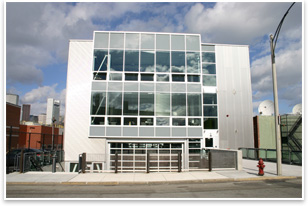
Boston, D.C., Adopt Green Building Rules for Private Development Summary: Boston is the first major U.S. city to implement a green building zoning code. “Article 37” will require all major new and rehabilitation construction projects exceeding 50,000 square feet to earn 26 LEED®-New Construction (NC) points, and a proposed further 4 points reflecting city priorities, including transportation, energy, historic preservation, and groundwater recharge. The city will not require third-party certification; Boston officials will review and confirm developers’ certifications. Additionally, Washington, D.C., is poised to become the first U.S. city to mandate sustainability guidelines for privately owned real estate. Boston Mayor Thomas M. Menino established a Green Building Task Force in 2003 composed of public and private experts in the field, including Mike Davis, AIA, to recommend a comprehensive green building plan for the city. The change to the zoning code was one of the major recommendations offered by the task force. “Zoning is a tool of public policy. Climate change is a big issue and architecture can play a big part in fixing the problem,” Davis says. “When a governing body says that we need to do something about climate change, then you need to look for people with specialized expertise, and in this case it was people who knew about green building and policy.” BSA supports changes The new green building zoning provisions bolster other green efforts, including LEED certification of government buildings and city-supported projects. “We are very excited to be at the forefront of green building practice. The business case for Boston, which has guided this initiative, is very compelling for the city, and especially for the architectural community,” says John Dalzell, senior architect, Boston Redevelopment Authority. “Although Boston may be the first major city in the United States to incorporate green building standards into its zoning code, we are hopeful that this leadership position will be short-lived as many other cities move quickly in the same direction and overtake us in the race to do something about climate change,” Murray adds. D.C. to require private buildings to go green In 2008, publicly financed buildings of more than 10,000 square feet will be required to achieve 75 points on the EPA national energy performance rating system and be certified LEED Silver. The act also requires the mayor to review LEED for Schools and circulate rules that require public schools to fulfill or exceed LEED for Schools or a similar rating system that mandates full-building commissioning. New construction and renovation of private buildings of 50,000 square feet or more will have to switch over to the new standards beginning in 2012. Nonresidential buildings will have to be LEED-certified, while educational facilities (excluding post-secondary educational buildings) will be required to adhere to the LEED for Schools or equivalent standards.
Collaboration with local COTE The task force is now working with the city to define the Green Building Advisory Council and determine who will be involved. Anderson says it was important to get the council members to help drive the measure. She advises other components to find a legislative champion who will promote green building policies and provide a forum where concerns of all involved can be aired and addressed upfront. |
||
Copyright 2007 The American Institute of Architects. All rights reserved. Home Page |
||
home
news headlines
practice
business
design
recent related
› AIA Launches Green Building Tool Kit for Mayors
› New Report Shows Green Schools Save Money, Energy; Promote Good Health
Tracy Ostroff contributed to this article.
Visit the Boston Green Building Web site to read more about the city’s sustainability programs.
View the D.C. regulation online.
A number of states have passed measures requiring the use of green building standards. Visit the AIA’s Sustainable Design Policy Resource Center, where you can find a map of state green building legislation (under State Legislation), the Sustainability 2030 Toolkit, a fact sheet on architects and climate change, and other helpful tools related to high-performance buildings.
Image:
The Artists for Humanity EpiCenter, Boston, by Arrowstreet is a LEED-Platinum rated building. Photo courtesy Artists for Humanity.

